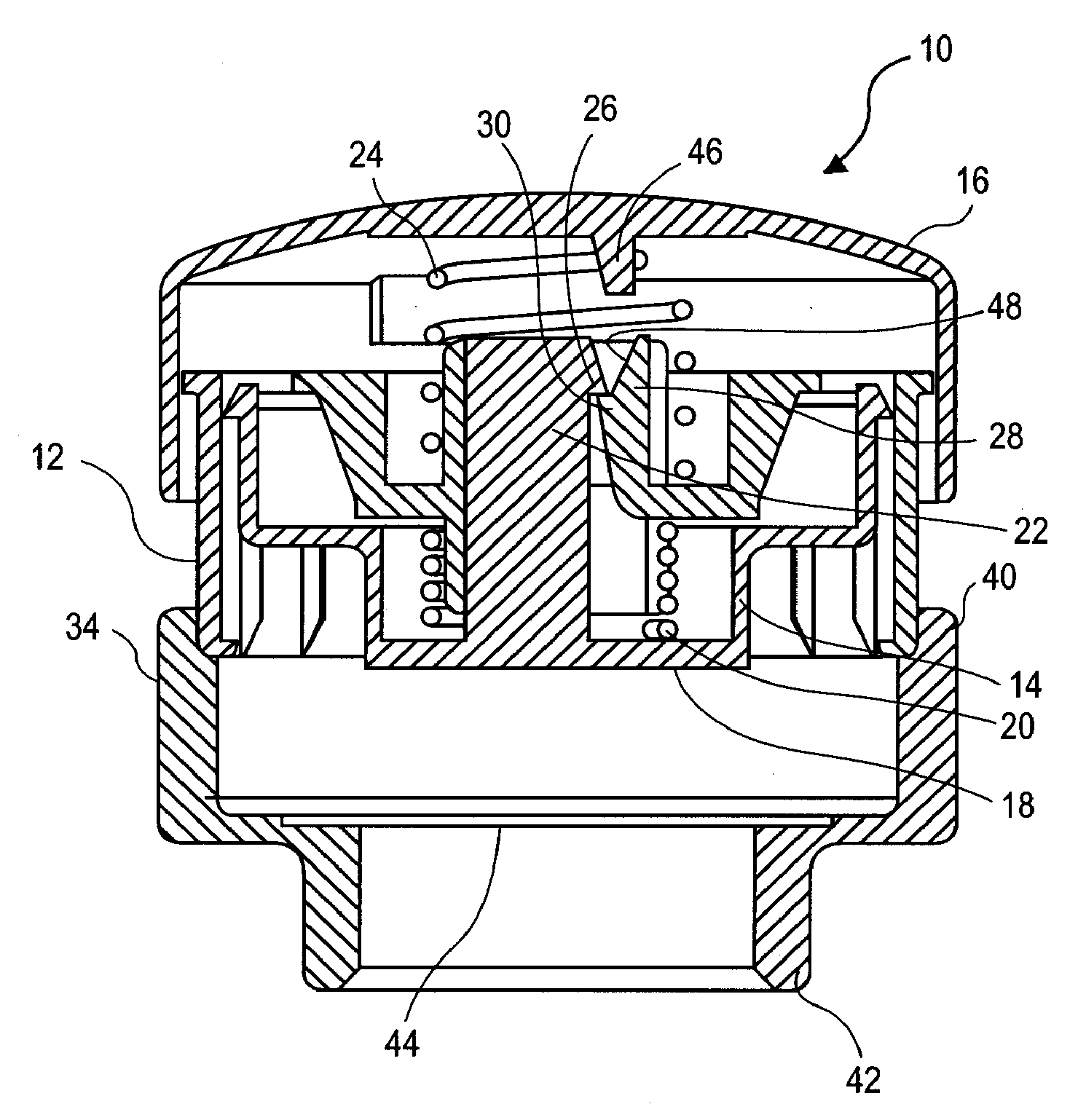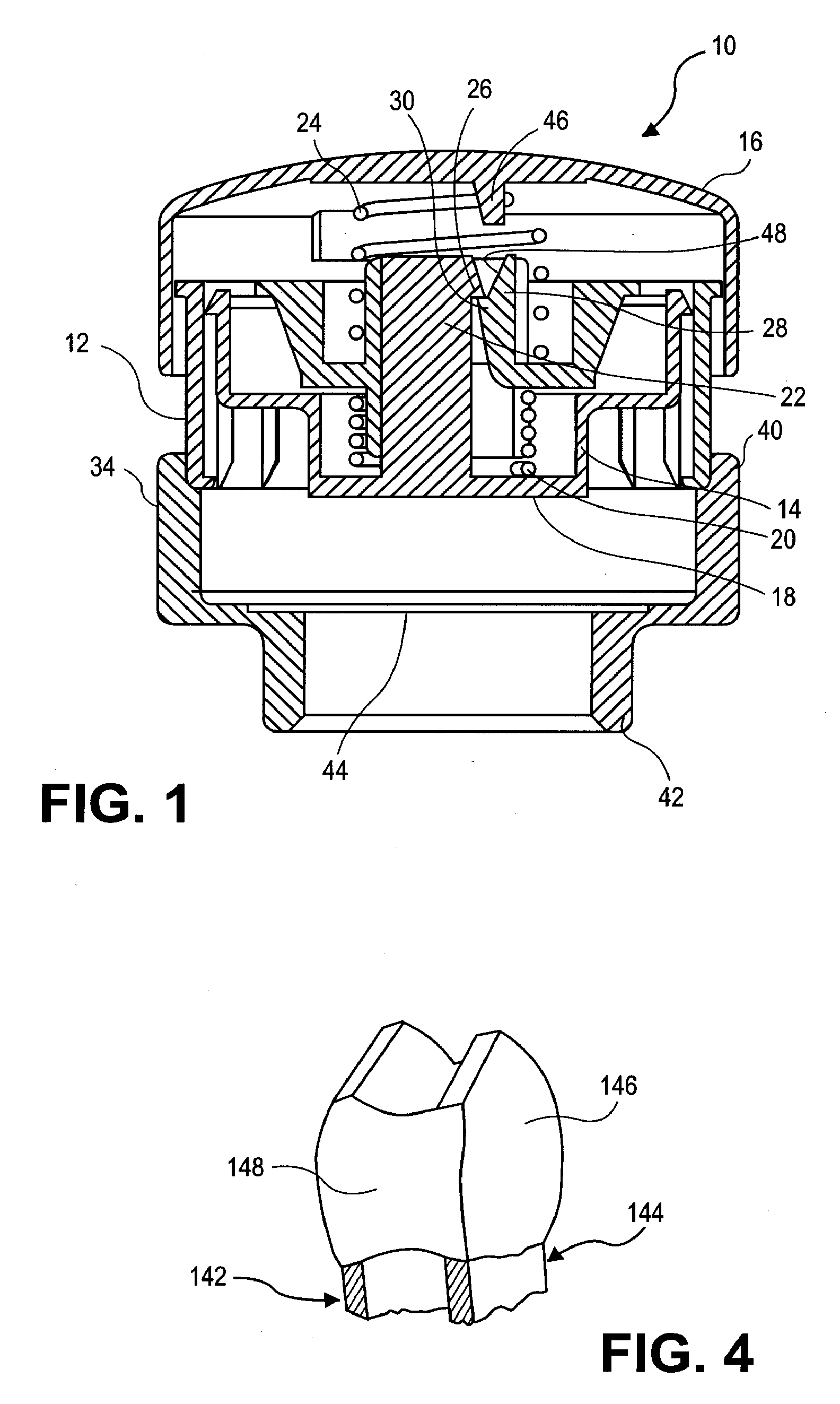Microprojection Array Application with Grouped Microprojections for High Drug Loading
a technology of microprojection array and array, which is applied in the field of applicability and method of applying a microprojection array, can solve the problems of insufficient rate of delivery or flux of large molecules through the skin, insufficient drug and pharmaceutical agents can be efficiently delivered by conventional passive patches or electrotransport systems through intact body surfaces, and still face significant challenges. , to achieve the effect of improving drug loading, facilitating skin penetration, and facilitating the penetration of microprojection
- Summary
- Abstract
- Description
- Claims
- Application Information
AI Technical Summary
Benefits of technology
Problems solved by technology
Method used
Image
Examples
example 1
[0123]FIG. 15 shows a photograph of an microprojection array having microprojection pairs with drug coating, made by stacking two layers of microprojections together wherein the microprojections of the bottom base layer protrude through the window openings in the top microprojection base layer. The microprojection member was made by chemically etching a titanium substrate to obtain microblade arrays 2 cm2 in size and 25μ thick with methods known in the art to form arrowheaded microblades and stacking two microblade arrays to form a microprojection member.
[0124] A first substrate titanium sheet a little thicker than 25μ was coated with photoresist, imaged for a pattern to form microblades and chemically etched with an etching solutions, such as ferric chloride solution, known in the art. The patterned polymer layer protected portions of the substrate and left other portions unprotected. After etching, the part of the substrate that was not protected by the patterned polymer layer wa...
example 2
[0126] A first microprojection member with a single base layer was made with the method of Example 1, similar to the top microblade array of Example 1. A second microprojection member with two base layers was made in the fashion of FIG. 15, similar to the double layered microprojection member with two microblade arrays stacked in Example 1. In the second microprojection member, the microblades (microprojections) of the bottom layer protruded through the top layer and paired with corresponding microblades (microprojections) of the top layer. The top microblade array had a microblade (microprojection) density of about 725 / cm2. The microblades of the top layer had a perpendicularly extending top portion of 225μ length 116μ width 25μ thickness, and a planar surface area of about 5.8×10−3 mm2. The bottom layer of microblades had a perpendicularly extending top portion of about 250μ length, 116μ width, 25μ thickness, and a planar surface area of about 5.8×10−3 mm2. When stacked together, ...
example 3
[0127] A microprojection member was made from two microprojection layers that were stacked together with a method similar to that of Example 1. The microprojections of the bottom layer protruded through the top layer and paired with corresponding microprojections of the top layer. In a pair, the top layer of microprojections extended from the plane of the array at 50 degrees and leaned towards the microprojection from the bottom layer. The microprojection from the top layer had a top portion of about 225μ length, 116μ width, 25μ thickness, and a planar surface area of about 5.8×10−3 mm2. The bottom layer of microprojections had a top portion (extending from the plane of the base layer at an angle) of about 225μ length, 116μ width, 25μ thickness, and a planar surface area of about 5.8×10−3 mm2. The combined arrays formed a pinnacle shape that contained the drug formulation (72.5% w / w granisetron, 27.0% w / w citric acid and 0.44% w / w polysorbate 20). FIG. 17 is an electronmicrograph of...
PUM
 Login to View More
Login to View More Abstract
Description
Claims
Application Information
 Login to View More
Login to View More - R&D
- Intellectual Property
- Life Sciences
- Materials
- Tech Scout
- Unparalleled Data Quality
- Higher Quality Content
- 60% Fewer Hallucinations
Browse by: Latest US Patents, China's latest patents, Technical Efficacy Thesaurus, Application Domain, Technology Topic, Popular Technical Reports.
© 2025 PatSnap. All rights reserved.Legal|Privacy policy|Modern Slavery Act Transparency Statement|Sitemap|About US| Contact US: help@patsnap.com



